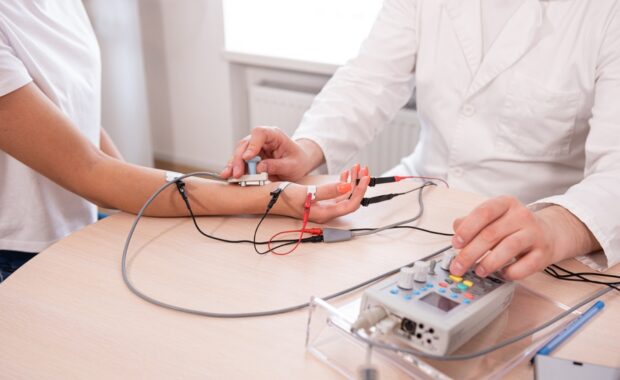An EMG test is used to measure the electrical activity in muscles or nerves. This test is necessary for diagnosing a variety of conditions such as carpal tunnel syndrome, herniated discs, and neuromuscular disorders. The procedure of an EMG test can be divided into two stages: needle insertion and nerve conduction study.
The first stage of the EMG test is needle insertion. During this stage, a thin hollow needle called an electromyogram (EMG) needle will be inserted into specific muscles. This process involves injecting a local anesthetic into the skin and inserting the needle directly into the muscle tissue. Once the EMG needle has been inserted, it records electrical activity within that particular muscle group to determine any abnormalities.
The second stage of an EMG test is nerve conduction study (NCS). During NCS, electrodes are attached to either side of the damaged area via surface probes or directly injected through adhesive patches. These electrodes then deliver small electrical impulses which measure how quickly they interact with each other and transmit their signals back to the machine. This helps in determining just how well your nerves are functioning and whether there is any damage present.
Once both stages have been completed, your doctor will interpret all data collected from both tests to help diagnose any abnormalities or health conditions you may be experiencing. It’s important to note that although this testing appears daunting at first glance, it’s very safe and rarely causes any discomfort or pain during or after the procedure has been completed.
These tests should be pre-authorized by your workers’ compensation adjuster. Be sure that you check before undergoing this test to make sure it has been authorized.


